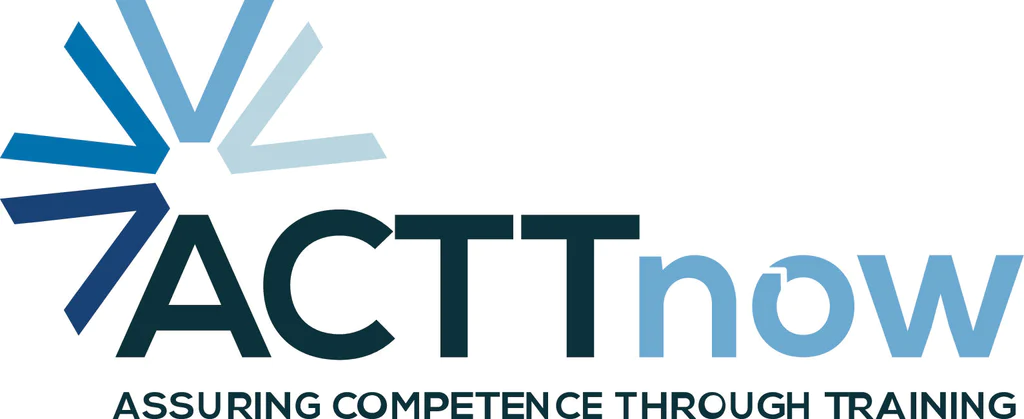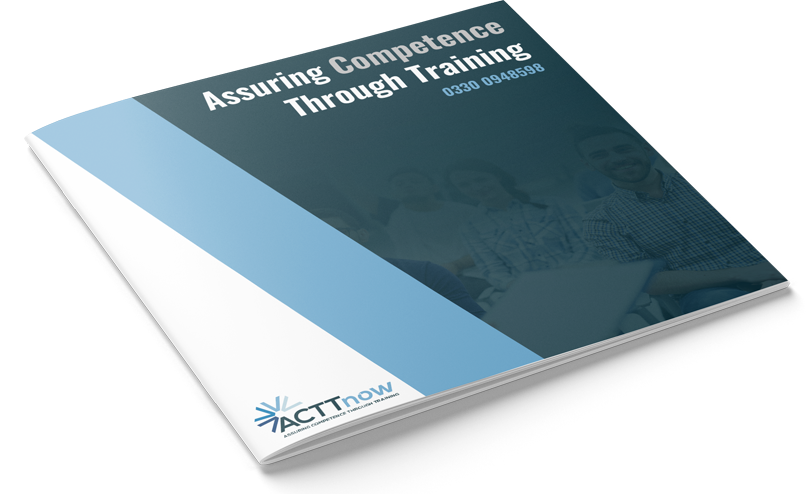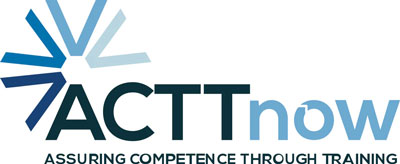Who Should Attend?
Anyone who selects, mounts or uses abrasive wheels.
Learning Outcomes
The course covers the following areas so the learner will:
? Have an awareness of Health & Safety at Work Act 1974, PUWER 1998 legislations
? Understand the risks and cause of common accidents
? The correct use of abrasive wheels
? Understand the correct PPE requirements
? Be aware of the dangers and precautions to using an abrasive wheel tool
Modules will cover
? Overview of the Health & Safety at Work Act 1974 and how it effects the planning of work with abrasive wheels
? What are the duties of care placed on employers by PUWER 1998
? What are the responsibilities placed on employees by PUWER 1998
? The common causes of accidents with abrasive wheels
? The common causes of burst wheels
? The markings found on abrasive wheels
? The markings found on angle grinders and petrol cutting tools
? The British marking system that is found on abrasive wheels and how it can be used when ordering new wheels
? Eye protection what is the best type and why it is needed
? Hearing protection why it is needed and what style is recommended
? Dust masks why they are needed and what type is recommended
? What other PPE is required when using abrasive wheels?
? What precautions are recommended when using abrasive wheels to prevent fires
? What are the dangers of HAV when using abrasive wheels and how it can be controlled?
? Daily checks needed on diamond, abrasive and all tools to ensure safe use
The course contains both practical and theory-based learning. There will be a practical and written assessment conducted and assessed by the instructor to ensure competency has been achieved. Upon successful completion, the candidate will be issued with certification by ACTTnow, valid for 2 years.
Maximum attendees ? 10 people
Who Should Attend?
Anyone working or preparing to work within a medium risk confined space environment.
Learning Outcomes
The course covers the following areas so the learner will:
? Be able to enter and exit medium risk areas safely
? Be able to work safely within a medium risk area
? Understand the necessary and appropriate equipment to use
? Understand and implement emergency procedures for emergency evacuation
Modules will cover
? Safe Systems of Work
? Legislation ? the Confined Space Regulations 1997 inclusive of Manning Levels, Health and Safety at Work Act, Management of Health and Safety at Work
? Regulations, Personal Protection Equipment Regulations, Provision and Use of Work Equipment Regulations, Control of Substances Hazardous to Health (COSHH) Regulations
? Identification and categorisation of confined spaces
? Safe working in Medium Risk Confined Spaces
? Permit to Work procedures & Risk Assessments
? Plant and equipment ? suitability & requirements
? Gas hazards & proper use of gas detection equipment
? Safe use of emergency compressed air breathing apparatus
? Personal Protective Equipment requirements and safe use of
? Ventilation equipment requirements and safe use of
? Understand the required safety checks of equipment and how to conduct these
? Use of communication equipment and procedures
? Understand emergency procedures
The course contains both practical and theory-based learning. There will be a practical and written assessment conducted and assessed by the instructor to ensure competency has been achieved. Upon successful completion, the candidate will be issued with certification by ACTTnow, valid for 3 years.
Maximum attendees ? 8 people
Who Should Attend?
All employees who undertake work where harnesses and lanyards are required to be work as part of their work tasks.
Learning Outcomes
The course covers the following areas so the learner will:
? Be able to identify types of fall hazards associated with the workplace environment
? Be able to identify methods to eliminate or protect against fall hazards
Modules will cover
? Common fall hazards
? Fall hazard controls
? Fall arrest systems
? Harnesses
? Connecting Methods
? Hazard Recognition
? Safety Checks
? Lanyards
? Connectors
? Inertia Reels
? Dangers
? Harness trauma
? Harness fitting
The course contains both practical and theory-based learning. There will be a practical and written assessment conducted and assessed by the instructor to ensure competency has been achieved. Upon successful completion, the candidate will be issued with certification by ACTTnow, valid for 2 years.
Maximum attendees ? 10 people
Who Should Attend?
All employees who undertake manual handling operations as part of their work tasks.
Learning Outcomes
The course covers the following areas so the learner will:
? Understand the risks and cause of common accidents
? Be able to correctly perform a safe manual handling action
? Understand the physical mechanics of a manual handling action on the human body
? Be aware of the dangers and precautions to consider
Modules will cover
? Health & Safety at Work Act 1974
? Manual Handling Regulations
? Accident Statistics
? Manual handling risk assessments and how risk assessments apply to you
? Introduction to manual handling ? lifting and carrying safely
? The functions of the spine and muscular system
? Typical injuries caused & how to recognise and avoid potential problems
? Hazard identification and assessment of:
? The Task
? Individual Capabilities
? The Load
? The Working Environment
? Correct Handling techniques
? Practical exercises and tuition in how to avoid injury and strain
The course contains both practical and theory-based learning. There will be a practical and written assessment conducted and assessed by the instructor to ensure competency has been achieved. Upon successful completion, the candidate will be issued with certification by ACTTnow, valid for 2 years.
Maximum attendees ? 10 people
Who Should Attend?
All employees who undertake work at height operations as part of their work tasks.
Learning Outcomes
The course covers the following areas so the learner will:
? Have an awareness of the Health and Safety at Work Act 1974
? Be aware of Risk Assessment / Safe System of Work
? Be aware of Working at Height Regulations
? Be aware of the Provision and Use of Work Equipment 1998
? Be aware of Working at Heights ? Hierarchy of Controls
? Understand fall prevention ? scaffolding, mobile towers, MEWPS
? Will understand the safe use of ladders / stepladders
Modules will cover
? Falls in the workplace ? the scale of the problem
? Health and Safety at Work Act 1974 – Duties of Employer / Employees
? Management of Health and Safety at Work Regulations 1999
? Risk Assessment and Safe System of work
? Provision and Use of Work Equipment Regulations 1998
? Working at Height Regulations 2005
? Duty holder?s responsibilities
? Hierarchy of Controls
? Fall prevention
? Fall protection
? Personal Fall Protection Equipment
? The Ladder Code / Do?s and Don?ts – Stepladders
The course contains both practical and theory-based learning. There will be a practical and written assessment conducted and assessed by the instructor to ensure competency has been achieved. Upon successful completion, the candidate will be issued with certification by ACTTnow, valid for 2 years.
Maximum attendees ? 10 people
Who Should Attend?
For those who need a basic understanding in the essentials of Health and Safety, who need to apply for their CSCS cards.
Learning Outcomes
The course covers the following areas so the learner will understand:
? The need to prevent accidents.
? Health and Safety law.
? How your role fits into the control and management of site.
? Risk assessments and method statements.
? Performing safely and asking for advice.
? How to report unsafe acts to prevent an accident.
Modules will cover
? Workers individual responsibilities for their own safety and the safety of others
? Typical construction hazards and how these are controlled.
? How everyone can help achieve better practical standards of safety on site.
? Legal requirements and liabilities.
? Working at height.
? Manual handling.
? Fire prevention.
? Work equipment.
? Occupational health.
Candidates will undertake a written assessment to pass the course. With successful completion, the delegate will receive a CITB Health and Safety Awareness certificate, which is valid for 5 years.
Maximum attendees ? 12 people
Who Should Attend?
Managers and professionals who lead teams in construction and civil engineering industries.
Learning Outcomes
? How to implement effective HS&E practices
? How to reduce the number of accidents and fatalities on site.
? How to create a safe working environment.
? Legal and management.
? Health and welfare.
? General safety.
? High risk activities.
? Environment.
? Specialist activities.
? Mental health.
? Leadership.
? Occupational health governance.
? Behavioral safety.
? New technologies.
? Improving legislative compliance.
The pass mark for the operatives? test is 90%, to pass, you need to answer at least 45 questions out of 50 correctly.
Official CITB revision books are available to buy or download from shop.citb.co.uk or you can download the official Construction MAP HS&E Test app to help you prepare for your upcoming test.
Who Should Attend?
For those who need the green CSCS card for operatives.
Learning Outcomes
The operative test ensures workers have the minimum level of health, safety, and environmental awareness before going on site. The test covers the following five core knowledge areas:
? Working environment
? Occupational health
? Safety
? High risk activities
? Specialist
The pass mark for the operatives? test is 90%, to pass, you need to answer at least 45 questions out of 50 correctly.
Official CITB revision books are available to buy or download from shop.citb.co.uk or you can download the official CITB: Op/Spec app to help you prepare for your upcoming test.
Who Should Attend?
For those who need the Specialists CSCS card.
Learning Outcomes
The specialist test ensures workers have the minimum level of health, safety, and environmental awareness before going on site. The test covers questions from the specialist area selected as well as the following five core knowledge areas from the operations test,
? Working environment
? Occupational health
? Safety
? High risk activities
? Specialist
Specialisms Covered
? Supervisory (SUP)
? Demolition (DEM)
? Plumbing (JIB)(PLUM)
? Highway Works (HIW)
? Specialist Work at Height (WAH)
? Lifts and Escalators (LAEE)
? Tunnelling (TUNN)
? HVACR ? Heating and Plumbing Services (HAPS)
? HVACR ? Pipefitting and Welding (PFW)
? HVACR ? Ductwork (DUCT)
? HVACR ? Refrigeration and Air Conditioning (RAAC)
? HVACE ? Services and Facilities Maintenance (SAF)
The pass mark for the operatives? test is 90%, to pass, you need to answer at least 45 questions out of 50 correctly.
Official CITB revision books are available to buy or download from shop.citb.co.uk or you can download the official CITB: Op/Spec app to help you prepare for your upcoming test.


